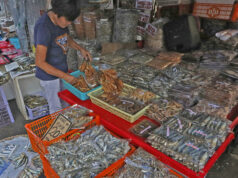
IT’S NEVER easy to clean up a mess. It gets harder when you have to clean up a mess that happened to an extension of yourself: your own clothes.
For centuries people washed clothes alongside river and lakes, giving them a good bashing in the process of cleaning them, and in tubs filled with well-water, scrubbed down with some strong lye soap, sometimes even boiling the clothes to make sure they got clean.
Then around 1855 came dry-cleaning, which is a misnomer as it is not a truly “dry” process since the clothes are treated with liquid — it is called “dry” because the clothes are cleaned using a chemical solvent other than water.
In the early days of dry-cleaning, getting a dress cleaned was like rolling dice: you never knew what you were going to get. As launderers poured chemicals on clothing, experimental materials, then new, like rayon and nylon, often took one for the team. Diana Vreeland, eminent editor of fashion magazine Vogue, recalled in her memoirs how she got a dress back from the cleaners in fragments, as the fabric couldn’t take the dry-cleaning process and simply disintegrated while it was being cleaned.
Meanwhile, versions of the washing machine had been around much earlier — the first English patent for one was given in 1691 — and in the succeeding centuries, inventors worked to find ways of giving laundresses a break from their backbreaking chores. And all through its history, the washing machine has been the subject of great improvements including almost complete automation.
One of the many reputable washing machine makers is the Swedish appliance brand Electrolux, which recently came out with the UltimateCare line of washing machines. To launch the line in the Philippines, the brand worked with entrepreneur Janice Vilanueva, and designers Amina Aranaz-Alunan and Rajo Laurel.
To demonstrate what the new washing machines can do, on Aug. 30 in Makati, prized items from the three — a gray woolen cardigan from Ms. Villanueva, a bright orange Hermes silk scarf from Ms. Aranaz-Alunan, and a bright red double-faced silk dress designed by Mr. Laurel — were all placed in a washer.
This reporter gave an internal gasp as buttons were pressed and the machine whirred on. Care labels on silk scarves and other items usually note that the item must be dry-cleaned, or else handwashed. Even with handwashing, sometimes the dye runs from these scarves anyway. As for wool, placing an item in a machine at the wrong setting usually deforms it, either expanding the fibers or else shrinking them to a laughable size.
After the demonstration, the clothes were dried and taken out, and they were miraculously intact. The silk scarf kept its pattern, color, and sheen, and the same could be said for the red dress. The woolen cardigan, meanwhile, kept its shape.
Made of galvanized steel, and with 14 settings (including specific ones for wool, delicates, and cottons), the machine has a drum with perforations embedded in honeycomb indentations, the better to clean the clothes. Andrea Soto Peonilla, Country Marketing Manager for Electrolux in the Philippines noted that the smaller perforations enable the front-load washing machine to give the clothes a more thorough clean. Meanwhile, Mr. Laurel notes that he prewashes his fabrics in these machines, including chiffon, silk, and cashmere.
Ms. Peonilla said that the technology comes from its facilities in Thailand. While Electrolux is headquartered in Sweden, she told BusinessWorld, “The insights for Southeast Asia are really what drives the innovation behind [it].”
So should we just abandon all dry-cleaning altogether? Ms. Peonilla says about the machine, “It’s your second option.”
“I cannot speak for them (the clothing manufacturers),” she said.
See, some manufacturers of delicate products like silk scarves place the dry cleaning instructions on their labels as insurance that you won’t attempt to wash, and possibly destroy their products at home. “The assurance for Electrolux is that this has been rigorously tested, not just by Electrolux, but also third-party [labs]. We know what we’re talking about.” — Joseph L. Garcia



